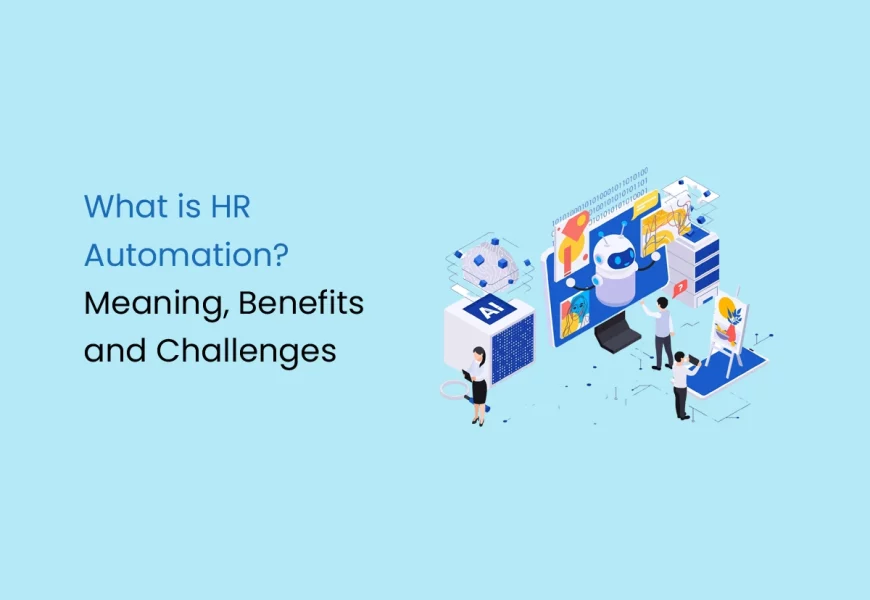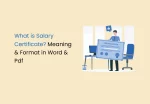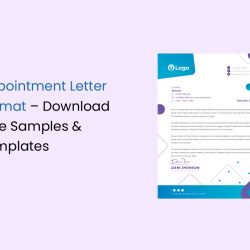There have been some great advancements in the field of Human Resources, and that has revolutionised the way it is practised today in the corporate sector. These new changes have made several tasks under HR easier, quicker, and more effective. HR automation empowers employees to be more productive with their time because tedious tasks can be handled by a good Human Resource Management System (HRMS).
The question arises: how can you automate your HR tasks in the most efficient way? This article answers that question for you and more. We will explore the need for automation in HR, the processes that can be automated, the current scene as well as the upcoming trends. So read on to know all there is to know about HR automation.
What is HR Automation?
It goes without saying that Human Resource Management is a crucial aspect of running any organisation. HR handles the entire lifespan of an employee, from a potential candidate to an ex-employee. They look after recruitment, training, payroll, attendance, onboarding and offboarding, leave tracking, and much more. The list would truly go on and on if we begin to make a list of all that HR does.
Other than the technical tasks, HR is also responsible for looking after the employees, maintaining the attrition rate, and ensuring the general well-being of the staff so that operations keep running smoothly. However, due to the sheer volume of paperwork and technicalities that are expected from the HR department, the tasks that require a human touch get neglected. A few years ago, there was no alternative to this problem. However, as technology continues to advance, there is a solution. HR automation is here, and it is here to stay.
HR automation basically utilises software to automate time-consuming tasks that are repetitive in nature. These tasks are onboarding, attendance management, payrolling, compliance, etc. Automating repetitive HR tasks allows your team to focus on strategic initiatives that directly impact the company’s growth. Automation enhances efficiency, strengthens security, and reduces the chances of human error in daily processes.
The need for HR automation arises from the heavy administrative workload that consumes valuable time. If your HR team spends more time on paperwork than leveraging their skills, it’s time to rethink your approach.
Switching to automation requires training, but the long-term benefits — from improved workflows to enhanced employee productivity — far outweigh the initial investment.
How can you Automate your HR Processes?
There are many aspects of the role that can be automated. We will discuss them in detail below;
Recruitment
HR automation has the potential to transform various aspects of the recruitment process, significantly improving efficiency and effectiveness.
Key tasks that can be automated include:
- Posting job advertisements
- Tracking applications
- Screening CVs
- Conducting pre-employment assessments
- Sorting and prioritising candidates
- Automating email communications with candidates
Case Study: Osceola County Sheriff’s Office, Florida
The Osceola County Sheriff’s Office previously relied on a cumbersome paper-based recruitment process, resulting in extensive paperwork, misplaced forms, and inefficient communication between various departments and applicants. This method not only slowed down the hiring process but also contributed to a nationwide shortage of police officers, as many potential candidates were discouraged by the inefficiencies.
Recognising the need for change, the Sheriff’s Office implemented HR automation by introducing a pre-employment online assessment system. This strategic move had a remarkable impact, leading to an increase in applications from 446 in 2012 to an impressive 1,305 the following year. The digital platform ensured that forms were correctly completed—no fields could be left blank, unlike their previous paper versions—and candidates were allowed to upload necessary photos easily.
Moreover, the automation process significantly enhanced the quality of applicants, as the increased volume of applications allowed the Sheriff’s Office to identify better-suited candidates for the positions available. The implementation also facilitated paperless background checks and enabled automated email notifications to keep candidates informed about their application status, improving the overall candidate experience. Additionally, this transformation resulted in savings of around $2,000 in office supplies for managing new hire files, showcasing how HR automation can lead to both improved efficiency and cost savings in the recruitment process.
Onboarding
The process of employee onboarding involves various tasks such as collecting verification documents, signing forms, providing access to necessary tools, and submitting device requests. Traditionally, this can be a lengthy and cumbersome process, but HR automation can streamline it significantly.
HR automation solutions can provide a clear, easy-to-follow checklist that enhances the onboarding experience. This includes automated notification and approval workflows, electronic signature collection, and the automatic generation of official PDF documents. Additionally, new hires can receive their devices quickly, often without needing to wait for IT support, facilitating a smoother transition into their new roles.
Case Study: KPMG, Belgium
KPMG faced challenges with their onboarding process, particularly the absence of a pre-boarding system. This resulted in a prolonged waiting period between the time new hires signed their contracts and their actual start date. To address this inefficiency, KPMG implemented an integrated and secure onboarding software solution.
With this new system, the onboarding process commences as soon as a candidate signs their contract. New hires are automatically provided with all the essential information they need via the app, ensuring they are well-prepared before their first day at work.
After two years of utilising the HR automation app, KPMG employees rated their overall hiring experience an impressive 4.45 out of 5, and their first-week experience a solid 4.12. This case highlights the transformative impact of HR automation on employee onboarding, leading to higher satisfaction and engagement levels right from the start.
Offboarding
The offboarding process, though often neglected, is as crucial as onboarding. When executed properly, it can safeguard the company while leaving a positive impression on departing employees. Unfortunately, manual offboarding can be laborious and fraught with potential pitfalls, such as misplaced forms or incomplete documentation. There is also a risk of non-compliance with security protocols.
HR automation software addresses these challenges by enabling the creation of a comprehensive offboarding checklist. This checklist can facilitate the following:
- Completion and electronic upload of necessary documents
- Scheduling of exit interviews
- Updating of personal information
- Arranging for the employee’s final paycheck
- Processing requests for the return of company equipment
- Controlling access removal to applications on a specified date
- Ensuring timely removal from the company directory on their last day to maintain accuracy
Organisations can streamline their offboarding processes by simply automating their processes. It will ultimately enhance the experience for both the departing employee and the HR team.
Access to Apps and Tools
Upon joining an organisation, new hires require immediate access to the relevant applications and tools essential for their roles. However, manually setting up access can result in wasted time on their first day, hindering productivity.
HR process automation streamlines this by automatically granting access based on predefined criteria, ensuring that new employees are fully operational from day one. Furthermore, as employees’ needs evolve, they can easily request access to additional applications, which can then be promptly accepted or rejected by their managers. This creates a more efficient and responsive work environment.
Paid Leave Management
Managing paid leave manually can pose significant challenges due to the various tasks involved. These include checking an employee’s leave balance, obtaining managerial approval for leave requests, and accurately recording the leave for payroll purposes. When such responsibilities fall on a single person, the potential for human error increases. Emails may go unnoticed, and disruptions can occur if that individual is unavailable due to their own leave.
HR automation software streamlines this process by automatically calculating leave balances, managing approvals, and integrating seamlessly with payroll systems, ensuring accuracy and efficiency in leave management.
Expense Claims Management
A striking 38% of employees find the process of submitting and handling expense claims tedious, with over one in six dreading the task entirely. Such unnecessary manual processes negatively impact employee satisfaction, which can lead to decreased productivity and performance.
Traditionally, employees are required to submit receipts, fill out forms, and seek manager approvals, often resulting in delays, errors, and misplaced documents. In fact, around 20% of manual expense reports are filed incorrectly.
HR automation transforms this cumbersome process by allowing employees to upload receipt photos directly from their smartphones. Expense management software automatically extracts essential data, such as the amount, merchant, and VAT. Once submitted, managers are promptly notified to approve or reject the claim. After managerial approval, a controller verifies the details before processing the claim with a single click. This streamlined approach can save employees up to 70% in processing time, reduce human error, and provide companies with a real-time overview of their spending.
Payroll Management
Calculating employee hours, including sick leave and vacation days, manually can lead to significant errors, resulting in employees being either underpaid or overpaid. Such inaccuracies not only create dissatisfaction among staff but also complicate compliance audits.
HR automation simplifies payroll processing by automatically tracking and calculating employee work hours and absences. This system ensures accurate payments while making data retrieval straightforward for compliance purposes.
Case Study: FuelCell Energy, Connecticut
Sandi Mauro, the HR director, traditionally compiled Excel spreadsheets with workers’ compensation data for payroll processing. However, a sorting error in one spreadsheet led to 600 employees receiving incorrect pay. Recognising the need for change, FuelCell Energy implemented HR automation software to reduce errors, save time, and enhance transparency regarding pay calculations.
As a result, the company transformed its compensation planning process, which previously took a month, to just a week, ensuring accuracy and efficiency.
Tax Filing
Navigating the intricacies of tax laws across local, state, national, and international levels can present a considerable challenge for HR departments, particularly given the frequent changes to these regulations. The complexities involved in tax filing can be overwhelming, especially for organisations with diverse operational locations.
Automating payroll tax processes can help ensure that employees and contractors complete the correct forms according to relevant tax laws. This automation provides easy access to digital files, making the tax filing process quicker and alleviating stress during audits. HR tax software streamlines compliance and enhances overall efficiency.
Time Management
Relying on manual timesheets to track employee hours can be incredibly inefficient. The process often results in delays, misplaced sheets, and inaccurate records, as employees may complete their timesheets days later. An automated timesheet application streamlines this process by digitally storing employee profiles, attendance records, and other crucial information, ensuring greater accuracy and speed.
Employee Benefits
Managing employee benefits, such as healthcare, retirement plans, and workers’ compensation, can be challenging, especially for larger organisations. Employees often lack visibility into their available benefits, leading to confusion. Automation software addresses this issue by tracking individual employee situations and presenting benefit options, especially during changes in circumstances. This self-service approach empowers employees to stay informed about their benefits.
Case Study: Grolsch
As Grolsch expanded, tracking employee preferences and benefits became increasingly complex. To tackle this challenge, the beer company implemented an automated HR system named “My Benefits.” This system provides employees with real-time insights into their benefits whenever they update their information. Following the introduction of “My Benefits,” employee satisfaction surged, with a survey revealing an increase from 6.8 to 8.2 out of 10 in overall contentment compared to the previous paper-driven approach.
Employee Performance Tracking
Automating employee performance tracking provides companies with readily accessible data to inform decisions regarding raises, bonuses, disciplinary actions, or terminations. This system enables HR to maintain performance records and allows managers to add notes, prepare for performance reviews, and ensure that objectives are consistently met.
Automating performance tracking helps the process become more streamlined and minimises biases by facilitating accurate decision-making. It also serves as a valuable reference point for both managers and employees, enhancing transparency and accountability in performance evaluations.
Case Study: Metropolitan Utilities District (M.U.D.)
Historically, M.U.D. relied on a rudimentary system for employee performance reviews, using a simple Word document that underwent minor annual changes. This outdated method often resulted in only 70% of employees receiving reviews, and many reported going years without any feedback. Consequently, the quality of work suffered as there was no effective means to monitor progression.
Recognising the need for change, M.U.D. sought to connect pay to performance but realised their existing processes were inadequate. After implementing HR automation, every employee received a performance review for the first time in the company’s 102-year history. This new approach facilitated improved communication between employees and managers regarding goals, making the entire process more manageable for everyone involved.
As a result of transitioning to an automated system, M.U.D. estimated a savings of two weeks’ worth of time previously spent on paperwork, along with numerous additional benefits across the organisation.
The Need For HR Automation
The need for automation is becoming gapingly obvious. Let’s inspect how:
Addressing Staffing Shortages
Many HR departments struggle with staffing, with over half reporting that they are understaffed. Consequently, 57% of HR professionals find themselves working beyond their capacity. With only 19% of HR executives anticipating an increase in headcount, automation emerges as a crucial solution, alleviating the burden on overworked staff and allowing them to concentrate on strategic initiatives.
Reducing Administrative Time
HR staff dedicate as much as 57% of their time to administrative tasks, which hampers their ability to engage in more impactful activities. The implementation of automated processes can help organisations streamline these administrative functions and enable HR teams to focus on initiatives that drive business growth and improve overall employee experience.
Current Scenario of HR Automation
What does the current progress in the field of automation tell us? Let’s take a brief look at that:
- Market Growth: The global HR technology market is booming, with projections indicating growth from $23.98 billion in 2022 to $39.90 billion by 2029. This expansion reflects a compound annual growth rate of 7.5%, highlighting the increasing demand for HR tech and automation.
- Skills-Based Hiring: A significant shift in recruitment methods is underway, with 81% of organisations now prioritising skills over traditional resumes. Consequently, 98% of companies view skills-based hiring tools as more effective.
- Adoption of Learning Management Systems: The trend towards online learning is evident, with 96% of large and mid-size companies employing learning management systems (LMS). Among small companies, the adoption rate stands at 81%. LMS platforms centralise training content, facilitate progress tracking, and support large-scale learning initiatives (2023 Training Industry Report, Training magazine).
- Performance Management Modules: A significant number of organisations are modernising their performance management processes. Currently, 51% of companies incorporate a performance management module within their existing HRMS or HRIS, while 17% have developed custom performance management software to suit their needs better.
- Benefits Administration Technology: The use of technology for benefits management is rapidly increasing. Over 90% of employers now utilise a technology platform to oversee some aspect of their HR or benefits functions, a rise from 70% five years ago (12th Annual Guardian Workplace Benefits Study, Guardian). This trend reflects the growing importance of efficient benefits administration within the HR technology market.
- Access to Recognition Systems: As companies shift away from manual recognition methods, 29% of employees now benefit from access to recognition software, which standardises the process of acknowledging and celebrating employee contributions (Employee Recognition Statistics, Nectar). This move towards automation enhances morale and fosters a culture of appreciation.
- AI Integration in HR Practices: Recent research indicates that 38% of HR decision-makers are currently employing AI within their workflows. The integration of AI is particularly beneficial in various areas: 46% of HR leaders utilise it to enhance analytics, 35% for employee learning and development, 32% for performance management, and 28% for onboarding processes.
Advantages of HR Automation
HR Automation, although cool, is an added expense. But these benefits make it an investment that will save you endless man-hours in the long run:
Enhances Efficiency
Manual HR processes are notorious for being time-consuming and inefficient. Paperwork gets held up, forms are misplaced, and errors creep in. Errors become common, and simple tasks like having forms signed can be unnecessarily time-consuming. HR automation transforms these processes by digitising workflows, allowing for smoother operations. This increased efficiency enables HR professionals to shift their focus from administrative duties to more strategic roles, like fostering company culture and advocating for employees, leading to a stronger and more effective HR department.
Provides Insights
Automation provides the ability to track and analyse data with ease. Through real-time insights, HR teams can identify trends, create comprehensive reports, and make data-driven decisions to refine processes. This not only helps in resolving inefficiencies but also allows HR to implement successful strategies and further enhance the organisation’s overall performance. The result is a streamlined HR function that not only saves time but also contributes significantly to business growth.
Reduced Errors Through Automation
Manually managing payroll, timesheets, and leave requests increases the risk of human error. These tasks require constant attention to detail, and even a small mistake can lead to significant issues such as payment discrepancies or inaccurate employee records. By automating these tasks, businesses can drastically reduce errors, ensuring accurate data entry and smooth processing. Automation is also faster, minimising the time spent on these administrative duties.
Enhanced Communication and Collaboration
HR automation provides a comprehensive overview of processes, helping teams stay aligned. When workflows and stages are clearly visible to all team members, it fosters better understanding and communication. With everyone aware of their responsibilities, collaboration naturally improves, leading to a more cohesive workplace. Automated systems streamline these interactions by centralising data and making it easier for employees and managers to communicate through shared platforms.
Cost Efficiency Through Paperless Processing
Traditional HR operations often rely heavily on paper-based processes, such as printing, filing, and storing documents. These manual methods not only consume time but also incur substantial costs for materials and storage space. HR automation eliminates the need for physical documents by digitising records. This not only reduces printing costs but also ensures easy access to information at the click of a button, freeing up space and reducing overhead expenses for the organisation.
Greater Efficiency and Insight
In addition to reducing costs and errors, HR automation enhances the overall efficiency of operations. By digitising time-consuming tasks like payroll, attendance tracking, and leave management, businesses can focus their efforts on more strategic initiatives. Furthermore, automated systems collect and analyse vast amounts of data, providing actionable insights. These insights allow HR teams to identify trends, make informed decisions, and continuously refine processes for better performance across the organisation.
Enhanced Candidate and Employee Experience
When HR professionals are overwhelmed with administrative duties, they often miss the opportunity to engage with potential job candidates, creating a negative hiring experience. With HR automation, staff have more time to respond to candidates, improving communication and overall satisfaction.
Employees also benefit from automation through self-service features. These allow them to track leave requests, expense reports, and employee benefits easily. Faster approvals and transparent processes create a positive and empowering experience for employees, enhancing their engagement and satisfaction within the company.
Trends in HR Automation in 2024
HR is now a dynamic space with automation integration. Here are some of the most popular trends in the field.
Generative AI
The adoption of Generative AI in HR is set to deepen in 2024, with 61% of HR leaders planning investments to enhance employee experience and streamline processes. Accenture reports that Generative AI could transform 40% of organisational work hours, improving productivity for those engaged in monotonous tasks.
A notable 41% of business leaders anticipate a complete redesign of their business processes with AI in the near future. Failing to adopt AI could result in competitive disadvantages, as 76% of HR leaders express concern about lagging behind their peers without implementing AI solutions within the next 12 to 24 months. Integrating Generative AI with chatbots can provide real-time support for queries related to onboarding, payroll, and attendance. However, it’s essential for HR to establish policies for ethical AI use, focusing on training to mitigate concerns like bias and data protection.
Predictive Analysis
Predictive analytics in HR is gaining attention as 56% of HR leaders acknowledge that their current technology fails to meet their evolving needs. This indicates a pressing need for updated HR technology that better addresses their requirements. Advanced predictive tools are anticipated to enhance workforce planning and data-driven decision-making by leveraging larger datasets and improved algorithms. However, many HR functions have yet to fully embrace the potential of data analytics fully, risking missed insights and misalignment with broader business goals due to insufficient investment in the necessary tools and skills.
Employee-Employer Relationship
In 2024, the dynamics of work are increasingly straining employer-employee relationships, significantly affecting engagement and retention. According to a Gartner report, only 26% of organisations ensure full compliance with on-site attendance, and nearly half of employees find performance expectations unsustainable. Trust is also a major issue, with only 50% of employees trusting their organisations. To foster a more positive environment, HR must adapt to trends like remote work, employee well-being, and diversity initiatives, positioning themselves as key drivers of organisational success and resilience.
In Conclusion
HR automation is essential for modern organizations. TankhaPay empowers you to automate key HR functions seamlessly on a single platform.
Our features include:
- Onboarding and Offboarding
- Time and Attendance Management
- Employee Data Management
- Compliance and Documentation Management
- Payroll Processing
- Performance Management
- Reporting
With advanced AI capabilities, TankhaPay delivers instant HR support, helping you establish clear competencies and career paths.
Schedule a demo today to discover how TankhaPay can address all your HR needs efficiently and cost-effectively.
FAQs on HR Automation
Will AI replace HR roles?
While AI is transforming HR practices, it is unlikely to replace human roles fully. Instead, AI will enhance HR professionals' capabilities, allowing them to concentrate on strategic and value-added activities.














